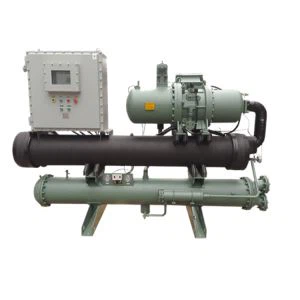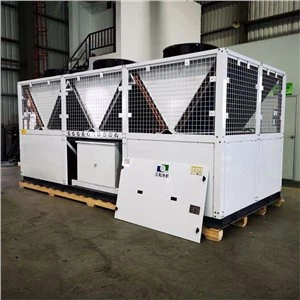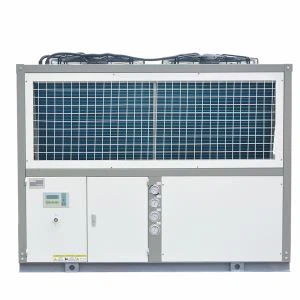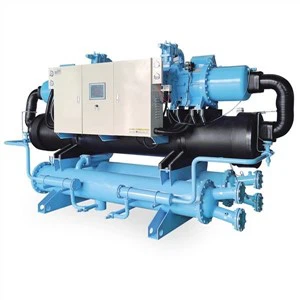As a seasoned provider of cooling tower solutions, I've witnessed firsthand the critical role these systems play in various industries. One of the most common concerns we encounter is water evaporation in cooling towers. In this blog, I'll delve into the mechanisms that cooling towers employ to prevent water evaporation, offering insights into the technology and strategies that ensure efficient water management.
The Basics of Cooling Tower Operation
Before we explore how cooling towers prevent water evaporation, it's essential to understand the fundamental principles of their operation. Cooling towers are heat rejection devices that transfer waste heat from industrial processes or HVAC systems to the atmosphere. They achieve this by using the evaporation of water to remove heat, which is a highly efficient method. However, this process also leads to water loss through evaporation, which can be a significant concern, especially in regions with water scarcity or high water costs.
Strategies for Reducing Water Evaporation
1. Closed - Circuit Cooling Towers
Closed - circuit cooling towers, such as the Counterflow Closed Cooling Tower, are designed to minimize water evaporation. In a closed - circuit system, the process fluid (usually water) is contained within a closed loop of tubes. The cooling tower sprays water over the outside of these tubes, and the heat from the process fluid is transferred to the sprayed water. The sprayed water then evaporates, but the process fluid remains within the closed loop, preventing direct contact with the atmosphere and reducing evaporation losses.
This design offers several advantages. First, it protects the process fluid from contamination by airborne particles, chemicals, and biological agents. Second, it reduces the amount of makeup water required, as the process fluid is not lost through evaporation. Finally, it can be more energy - efficient, as the closed loop allows for better control of the cooling process.
2. Evaporation Control Technologies
Many modern cooling towers are equipped with evaporation control technologies that help reduce water loss. One such technology is the use of drift eliminators. Drift eliminators are devices installed inside the cooling tower to capture water droplets carried by the air stream and return them to the tower basin. By preventing these droplets from being carried out of the tower, drift eliminators significantly reduce water loss.


Another technology is the use of variable - speed fans. Variable - speed fans allow the cooling tower to adjust the airflow rate based on the cooling demand. By reducing the airflow rate when the cooling demand is low, the tower can reduce the amount of water that is evaporated. This not only saves water but also reduces energy consumption.
3. Water Treatment and Management
Proper water treatment and management are crucial for preventing water evaporation in cooling towers. By maintaining the water quality, we can ensure that the cooling tower operates efficiently and minimize the need for excessive makeup water.
Water treatment involves the use of chemicals to control scale, corrosion, and biological growth in the cooling tower. Scale and corrosion can reduce the efficiency of the cooling tower and increase the risk of equipment failure. Biological growth, such as algae and bacteria, can clog the cooling tower components and reduce the effectiveness of the evaporation process.
In addition to chemical treatment, proper water management practices, such as regular blowdown and monitoring of water quality parameters, are essential. Blowdown is the process of removing a portion of the concentrated water from the cooling tower basin to prevent the buildup of dissolved solids. By controlling the blowdown rate, we can maintain the proper water chemistry and reduce evaporation losses.
4. Tower Design and Configuration
The design and configuration of the cooling tower can also have a significant impact on water evaporation. For example, Round Cooling Tower and Square Cross - flow Cooling Tower have different flow patterns and geometries that can affect the evaporation rate.
Cross - flow cooling towers, such as the square cross - flow design, have a more horizontal airflow pattern, which can result in lower evaporation rates compared to counter - flow cooling towers. Counter - flow cooling towers, on the other hand, have a more vertical airflow pattern, which can provide more efficient heat transfer but may also result in higher evaporation rates. The choice of tower design depends on various factors, including the cooling demand, available space, and water availability.
The Role of Maintenance in Water Evaporation Prevention
Regular maintenance is essential for ensuring that cooling towers operate efficiently and prevent water evaporation. Maintenance tasks include inspecting and cleaning the cooling tower components, such as the fill material, drift eliminators, and fans. Over time, these components can become clogged with dirt, debris, and biological growth, which can reduce the efficiency of the cooling tower and increase water evaporation.
In addition to cleaning, regular maintenance also involves checking the water quality and adjusting the water treatment program as needed. This helps to prevent scale, corrosion, and biological growth, which can all contribute to increased water evaporation.
Benefits of Reducing Water Evaporation
Reducing water evaporation in cooling towers offers several benefits. First, it helps conserve water, which is a precious resource, especially in regions facing water shortages. Second, it reduces the cost of makeup water and water treatment chemicals, which can be a significant expense for industrial and commercial users. Third, it can improve the environmental performance of the cooling tower by reducing the discharge of wastewater and the consumption of energy.
Conclusion
As a cooling tower supplier, I understand the importance of preventing water evaporation in cooling towers. By using advanced technologies, proper water treatment and management, and regular maintenance, we can help our customers reduce water loss, improve the efficiency of their cooling systems, and save money.
If you're interested in learning more about our cooling tower solutions or have specific requirements for your cooling system, I encourage you to contact us. Our team of experts is ready to assist you in selecting the right cooling tower for your needs and providing you with the support and service you deserve. Let's work together to achieve efficient and sustainable cooling solutions.
References
- ASHRAE Handbook of HVAC Systems and Equipment. American Society of Heating, Refrigerating and Air - Conditioning Engineers.
- Cooling Tower Institute. Technical publications on cooling tower design, operation, and maintenance.
- "Water Management in Cooling Towers" by various industry experts in the field of water treatment and cooling technology.






